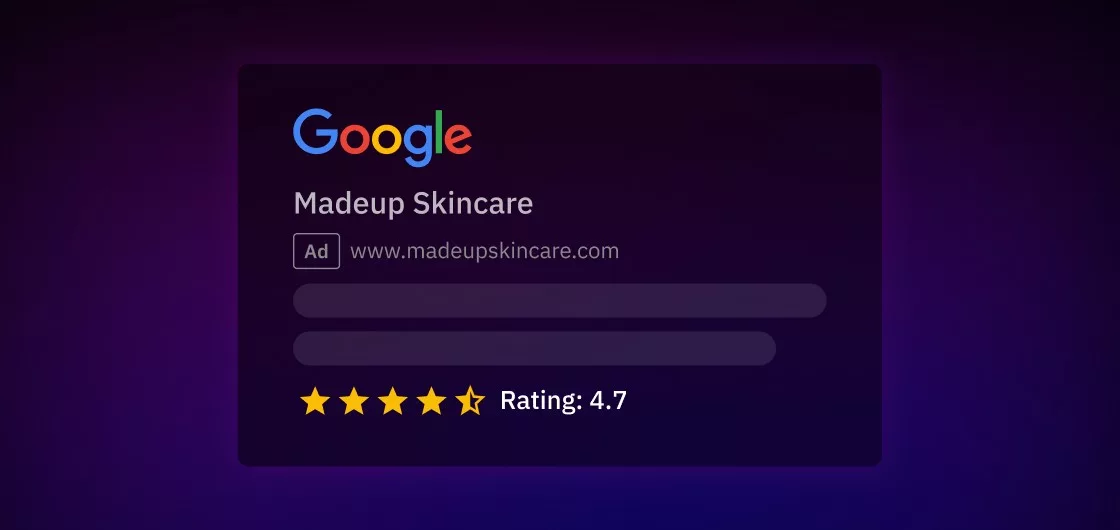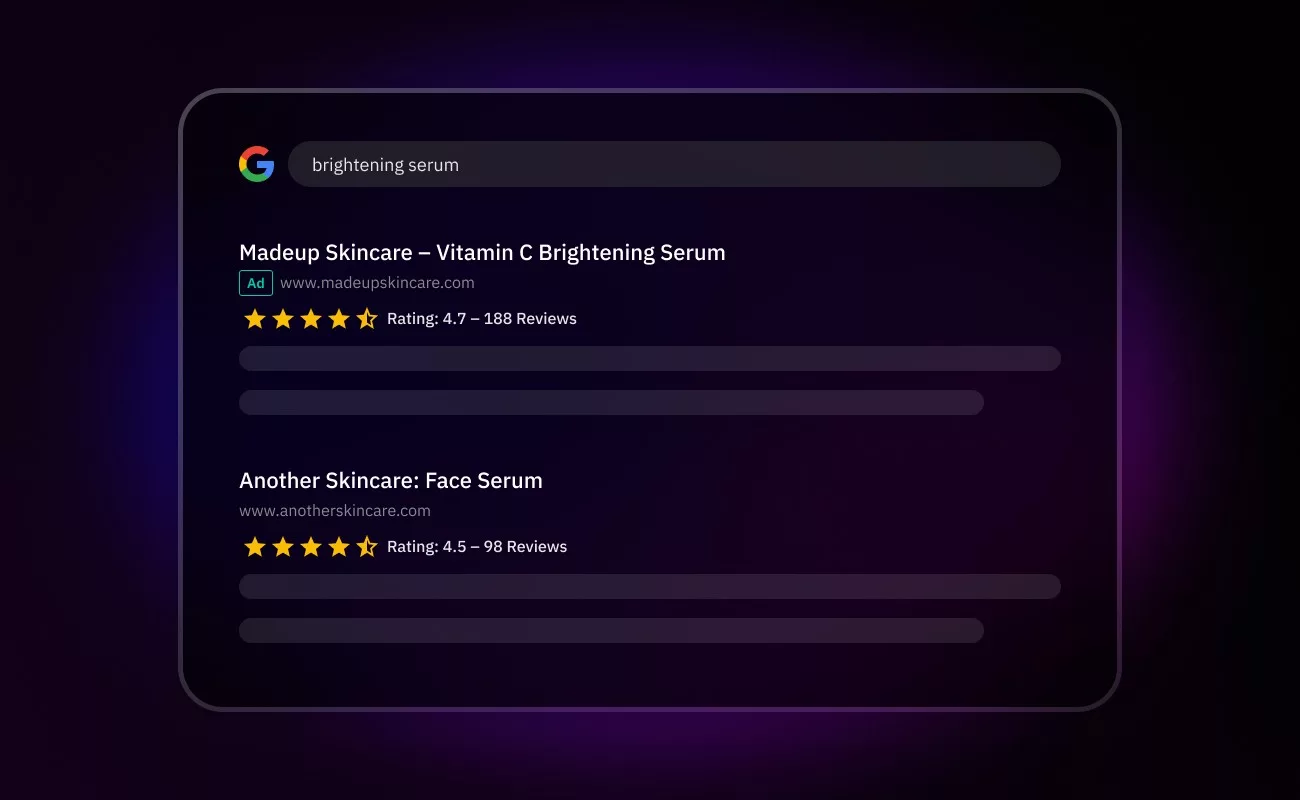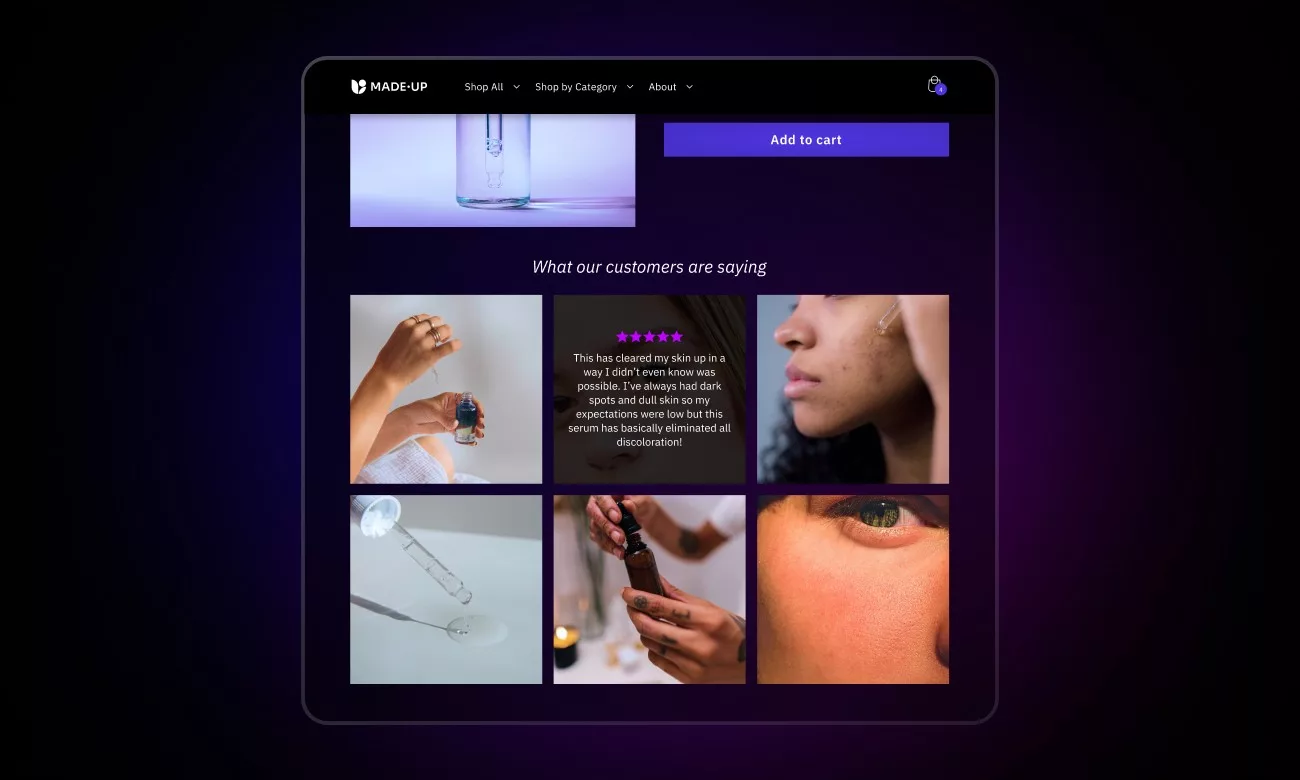
- Customer Marketing
- Personalization
- Quizzes
- Referrals
- Reviews and UGC
How Health and Wellness Ecommerce Brands Can Drive Success in 2025
Megan Wenzl | Nov 18, 2024
Dec 20, 2023 | 8 minute read

Megan Wenzl
Content Marketing Manager
As shoppers navigate a sea of options of brands to buy from, trust and credibility become paramount factors influencing their purchasing decisions. In this digital age, where information is at our fingertips, one tool has emerged as a game-changer for brands striving to build confidence among their customers: Google Seller Ratings (GSR).
In this guide, we unravel the intricacies of Google Seller Ratings and explore how it can empower your brand in the competitive ecommerce arena. From understanding the basics to implementing effective strategies, join us on a journey to unlock the full potential of Google Seller Ratings and elevate your brand reputation.
Google Seller Ratings are a Google Ads extension that displays a star rating alongside your ads. These ratings are a collective reflection of customer reviews and feedback, providing potential customers with a quick and easily digestible snapshot of other customers’ experiences with your brand. Ranging from one to five stars, these ratings encapsulate the overall satisfaction of customers who have interacted with your brand.
Google Shopping is a specialized platform within the Google ecosystem, designed to simplify the online shopping journey for consumers across the globe. Formerly known as Google Product Search and Google Shopping Express, this platform has evolved into a robust hub that amalgamates product listings, prices, and reviews from various online retailers. Instead of navigating through multiple websites, consumers can explore, compare, and purchase products directly through Google’s user-friendly interface.
While both play pivotal roles in shaping the online shopping experience, Google Seller Ratings and Google Shopping serve distinct purposes for ecommerce brands.
In essence, Google Seller Ratings contribute to your brand’s reputation by showcasing an average star rating of your store, while Google Shopping serves as a place where users can discover, compare, and purchase a wide array of products. Together, they create a powerful synergy that fosters trust, convenience, and a positive shopping experience. You can push your ratings, reviews and UGC to Google Shopping Ads, while site reviews can be used alongside your Google search ads for Seller Ratings.
When potential customers see a high star rating associated with your brand, it offers assurance that others have had positive interactions with your products or services. This, in turn, instills trust in the minds of consumers, making them more likely to consider your brand for their purchase. According to Okendo research on ecommerce trust, 95% of consumers say that trust is a factor in deciding what brands to do business with, with 55% saying it is a “significant” factor.

But trust is just one benefit of Google Seller Ratings. It has many tangible benefits that contribute to your brand’s reputation, how you compete against other players in your space, how confident consumers feel buying from your brand. These include:
Google Seller Ratings enjoy prime real estate alongside your brand name in Google Ads, ensuring that they catch the eye of consumers actively searching for products or services. This strategic placement transforms your ads from mere listings to trust signals, immediately visible during the critical moments when potential customers are making decisions.
When users see a brand backed by positive ratings, they are more likely to click on the ad to explore further. This heightened interest can lead to more visitors navigating to your website, presenting a valuable opportunity to convert these clicks into actual customers. In fact, ads with Seller Ratings can get up to a 10% higher click-through rate, according to Google.
The cost of acquiring a customer is only getting more expensive. If you’re looking for ways to decrease customer acquisition costs, Google Seller Ratings can actually help with lowering advertising costs. Google Seller Ratings helps improve your ad quality score, which reduces the cost-per-click on your Google Ads over time. Because you’ll increase the click-through rate, you can convert more customers.
This higher click-through rate shows Google that your ads are highly relevant to the customer. So, as the amount of clicks goes up on your ad, the Quality Score of the ad increases too. The Quality Score is based on your ad quality compared to other ads. The higher the Quality Score from Google, the less you spend on cost-per-click.
95% of consumers believe reviews are important when making a purchase decision, with a significant portion (34%) asserting that they are “extremely” important. Google Seller Ratings amplify the power of customer reviews by showcasing instant snapshots at peak moments of the buyer’s journey.
Given a choice between a brand with positive Google Seller Ratings and one without, consumers are more likely to lean towards the former. The presence of favorable ratings creates a positive first impression. This consumer preference can be the deciding factor when users are on the verge of making a purchase decision.
As Jonathan Gosper, Partner, COO of Evestar says, “Having Google Seller Ratings in Shopping Ads improves consumer’s trust and conversions, which is why we always advise our DTC clients to leverage Okendo’s ability to sync reviews to their search ads. If you compete in search results with a brand that shows reviews and you don’t, there’s a significantly lower chance that you will get the sale.”
Asking your customers for reviews is a key step in building your brand’s reputation and credibility. After your customers submit a product review, they have an opportunity to contribute further by submitting a site review on the post-review page. This two-step process is unique because site reviews, which can be used as Seller Ratings, can be requested after a customer submits a product review. This distinction is vital for businesses aiming to optimize their presence in Google Ads.
Here are some effective strategies for asking for product reviews, leading to a site-review request post-review:
By implementing these tactics, you can effectively gather product reviews and then site reviews, enhancing your brand’s online presence and credibility. In addition to Google Seller Ratings, you can also use site reviews on your reviews displays for your store.

Okendo is an official Google Seller Ratings Partner. Shopify brands can request and collect site reviews which can be used as a seller rating in Google paid search ads. This essentially transforms your product listing into a dynamic showcase of your brand’s reputation.
To enable the Google Seller Ratings integration, go into Settings > Integrations > Google Seller Ratings in the Okendo app. Your feed will then be passed through to Google, who will validate it within 24 to 48 hours.
It’s really that simple, but there are certain requirements to enable Google Seller Ratings:
Okendo also integrates with Google Shopping, helping you to augment your product listings with locally captured reviews.
To do this:
You may also need to:
Once your feed has been enabled, Okendo will pass this to Google. Google will review your application and either approve or reject based on the information provided. This step can take anywhere from 48 hours to two weeks.
While reviews are important for Google, they also provide many benefits, including the collection of valuable zero-party data directly from customers, which can be used to build stronger customer experiences.
Related articles
Ready to learn more?